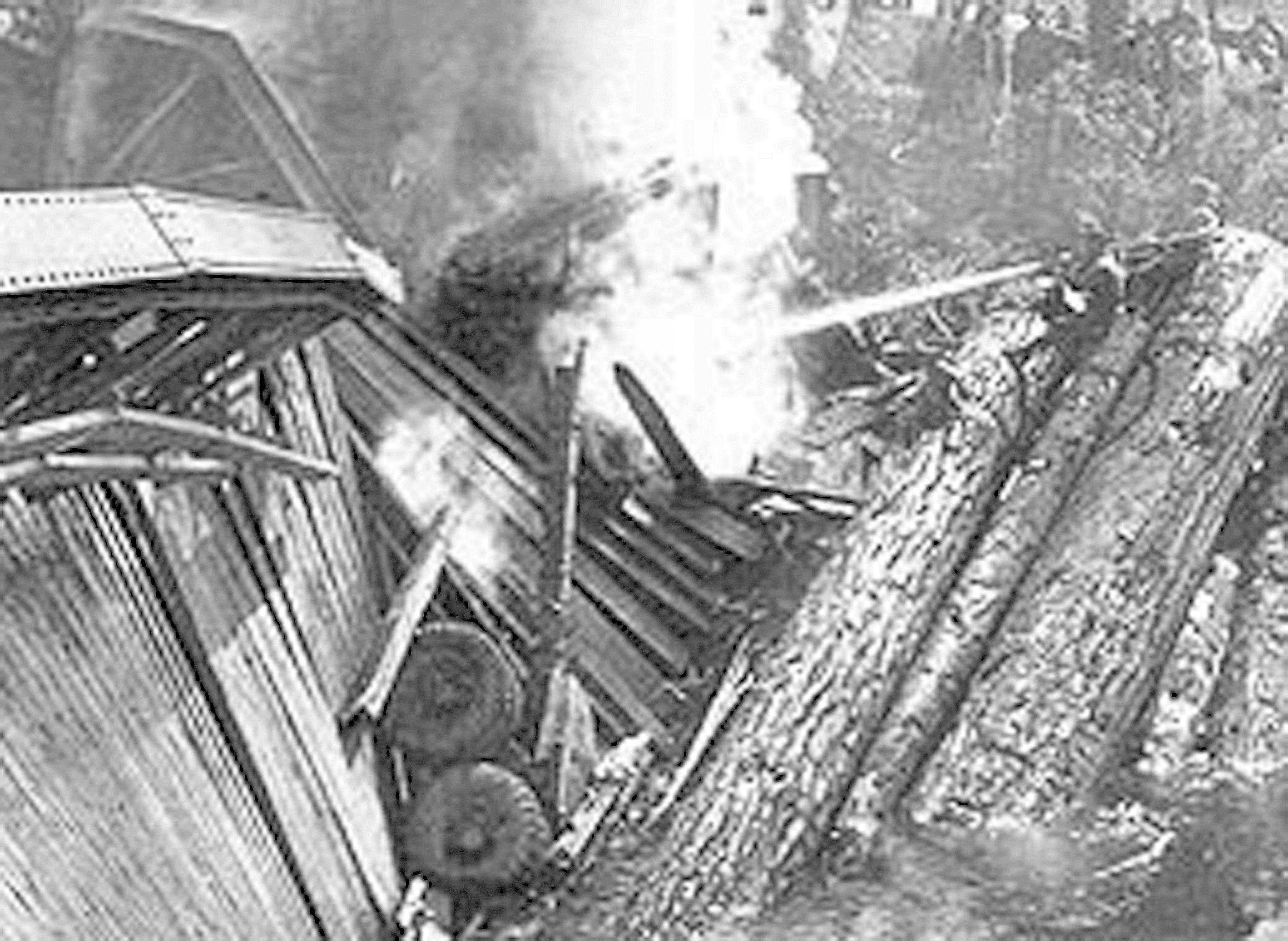The Skagit River Bridge collapse is quickly gaining its position in Washington state’s bridge folklore.
Traffic snafu aside, it pales in comparison to some others — including two on the North Olympic Peninsula.
Starting with the two Peninsula failures — and not counting the most recent collapse near Mount Vernon — here are five memorable bridge “malfunctions” across Washington state:
Hood Canal Bridge, 1979
On Feb. 13, 1979, wind gusts of up to 120 mph sunk the Jefferson County end of the Hood Canal Bridge, which at that time was just 18 years old.
According to HistoryLink.org, “On the day of the storm, southwest winds aligned exactly with the direction of the canal, and within this huge wind tunnel the bridge was the only resisting solid object.
“Waves 10 to 15 feet high crashed against the bridge for hours, until finally the western floating portion sank, leaving three-quarters of a mile of open water.”
It took three years to re-bridge the North Olympic Peninsula with Kitsap County and points west.
Since then, the original eastern portion has been replaced, and the replacement west end has been widened.
Hoko River Bridge, 1947
On April 22, 1947, F.H. Jarnagin drove his loaded log truck over a rural, wood-decked, steel pony-trussed bridge spanning the Hoko River.
The bridge, located 4 miles west of Sekiu, was posted with a load limit of 5 tons.
Jarnagin’s truck weighed 40 tons, and it and the bridge collapsed into flames, according to HistoryLink.org.
Jarnagin escaped unharmed, but he faced legal action from then-Clallam County Prosecuting Attorney D.E. Harper.
The bridge was built in 1931.
Allen Street Bridge, 1923
Built entirely of wood in 1906, the Allen Street Bridge in Kelso fell into the Cowlitz River on Jan. 3, 1923.
Authorities believe it took the lives of at least 35 people, making it the deadliest bridge collapse in state history.
According to HistoryLink.org, “because of the large number of transients working in the area, an exact figure will never be known.”
Witnesses reported that there were between 100 and 150 people and as many as 20 vehicles crossing the bridge when a suspension cable snapped, quickly downing the supporting towers and sending the entire bridge into the Cowlitz.
Lake Washington Floating Bridge, 1990
There’s a good chance you watched the demise of the Lake Washington Floating Bridge east of Seattle on TV.
It was Nov. 25, 1990, the weekend after Thanksgiving, when a week of high winds and rains did in the he 50-year-old Lacey V. Murrow Bridge, as it was officially named.
The bridge was undergoing a $35.6 million renovation, with workers for Traylor Bros., an Indiana-based construction firm, cutting holes into the hollow concrete pontoons as part of the repair work prior to the Thanksgiving break — holes that were not closed prior to the stormy weekend.
As HistoryLink.org notes, “It is later discovered that hatchways into the concrete pontoon air pockets were left open, allowing water to enter.”
Tacoma Narrows Bridge, 1940
By far the most memorable bridge failure in state history is the collapse of the first Tacoma Narrows Bridge on Nov. 7, 1940.
High winds downed the four-month-old bridge connecting Tacoma and Gig Harbor, which was already known to sway wildly in the right weather conditions.
The collapse came just four months after the bridge was dedicated, and earned the nickname “Galloping Gertie” for the way it rocked.
Despite the fact that it’s now known the world over as a massive engineering failure, the collapse of the original Narrows Bridge claimed only one life — a dog named Tubby.
The replacement opened in 1950 and was joined by a second suspension bridge — the one with the $4 toll — in 2007.
________
The Seattle Weekly contributed to this report.
